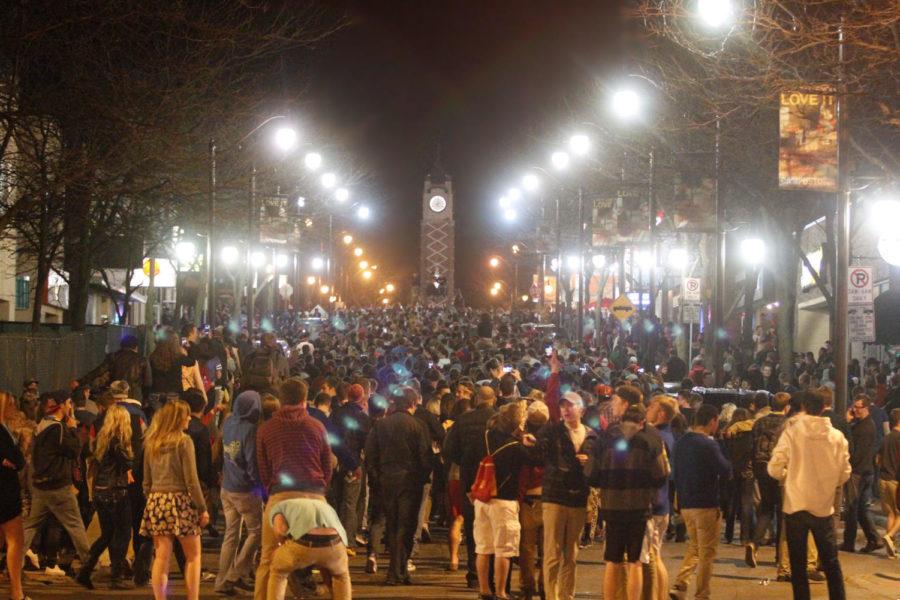Editorial: Be careful not to recreate same Veishea
January 20, 2016
Students spent a Tuesday night drinking too much alcohol, flipping over cars and knocking down a light pole and the cost was the banishment of a tradition held incredibly valuable, both emotionally and economically, to the university community.
The loss of Iowa State’s nearly 100-year Veishea tradition in April 2014 still lingers on campus, and administrators have been racking their brains in attempt to fill the Veishea void with some sort of event in the spring.
ISU President Steven Leath on Friday told the Iowa State Daily that the Spring Event Planning Committee wanted to create events that “still showcased the university.”
- Celebration in February featuring the sale of cherry pies integrated with other Valentine’s Day activities
- Celebration of arts in April in conjunction with Cyclone Market
There will also be events implemented the next academic year:
- Student-led community service project
- Parade and college showcase
- Event to welcome students back to campus for the start of the spring semester
Leath made it clear he did not want a weekend in April where multiple nighttime events took place.
It’s a tough mission to replace such a cherished tradition. The administration was charged with a difficult task in adapting to the situation. Veishea had such a longstanding grip on the community. Those who were first-year ISU students in spring 2013 are now the last to have experienced a full, real Veishea. The next year, the celebration was cut early in the week when a small proportion of ISU students took the after-hours events of Veishea too far.
But that wasn’t the first time.
The first Veishea of 1922 included a horse show, a parade and Veishea queens. A nighttime celebration wasn’t added until the second year of the tradition, an event that was questioned in 1941 because of a lack of student interest, a vote that was quickly withdrawn.
Just more than 40 years later, the first major uproar took place in 1988 when students led a two-night rampage that caused 50 arrests and about 20 injuries.
Not long after, in May 1992, another riot ensues, where upward of 8,000 people, loitered around what used to be called Alumni Hall. Officers used tear gas and people were cleared by around 4 a.m. and then-ISU President Martin Jischke threatened to end Veishea if “we can’t get a pretty clear assurance that these types of incidents will not happen again in the future.”
Five years later, a man died after being stabbed in front of an ISU fraternity during Veishea week and President Jischke says ban alcohol or end Veishea. Students choose to make Veishea dry.
In 2004, about 40 people were arrested after about 100 police officers and state troopers broke up an off-campus party. Then president Gregory Geoffroy banned 2005’s Veishea, but allowed its return in 2006.
2014 was the final straw.
We encourage and support the idea of creating events to attempt to fill the Veishea void, and we realize doing so was not an easy task. The projected events include treasured portions of Veishea past, an admirable, yet risky decision. Maintaining such similar events provides the opportunity to again enjoy those lost loves, but could also bring back angst to reboot the non-university related activities that ruined the celebration in years past.
But current and future administration should be wary of creating a reflection of the celebration so that history doesn’t repeat itself.







